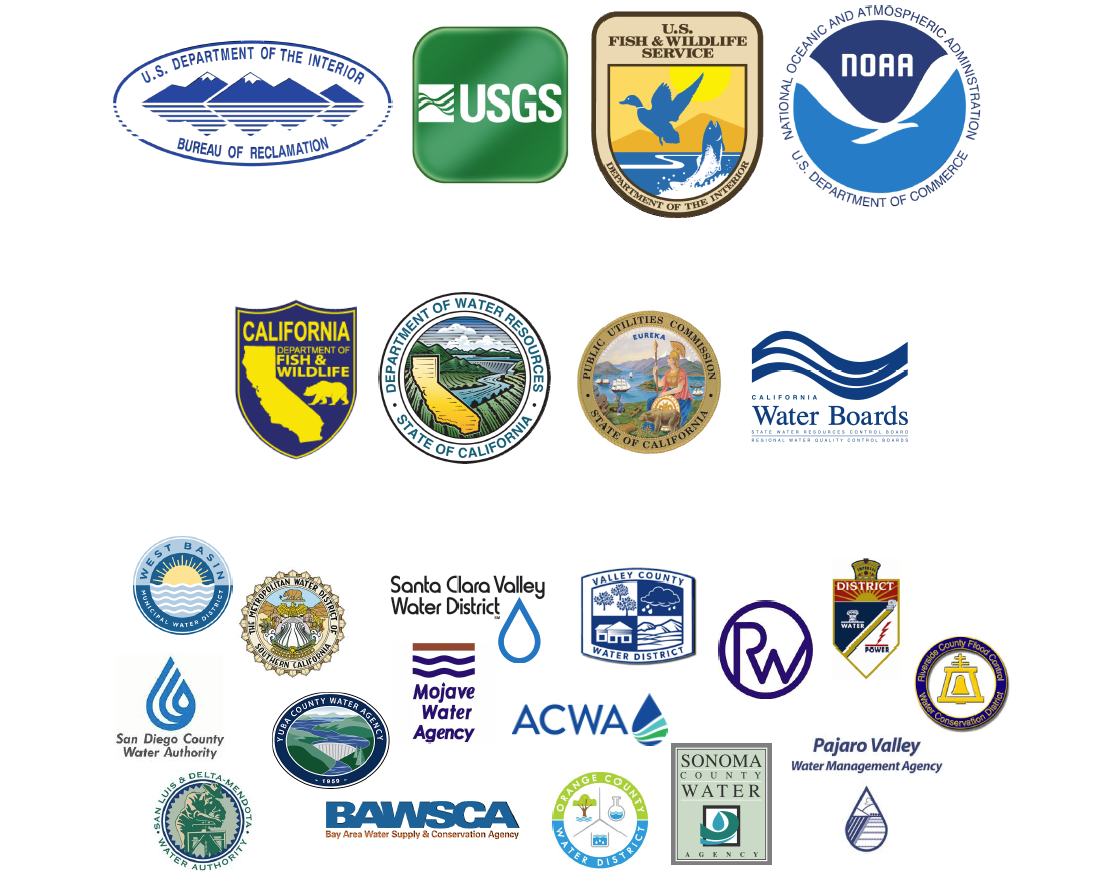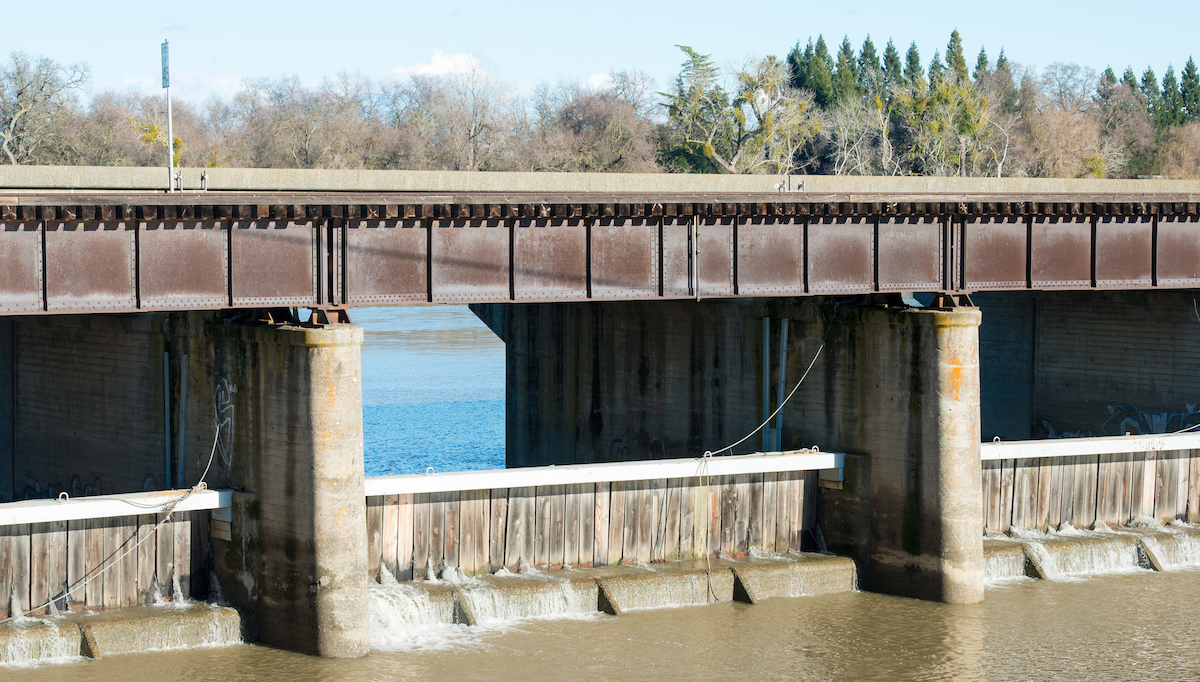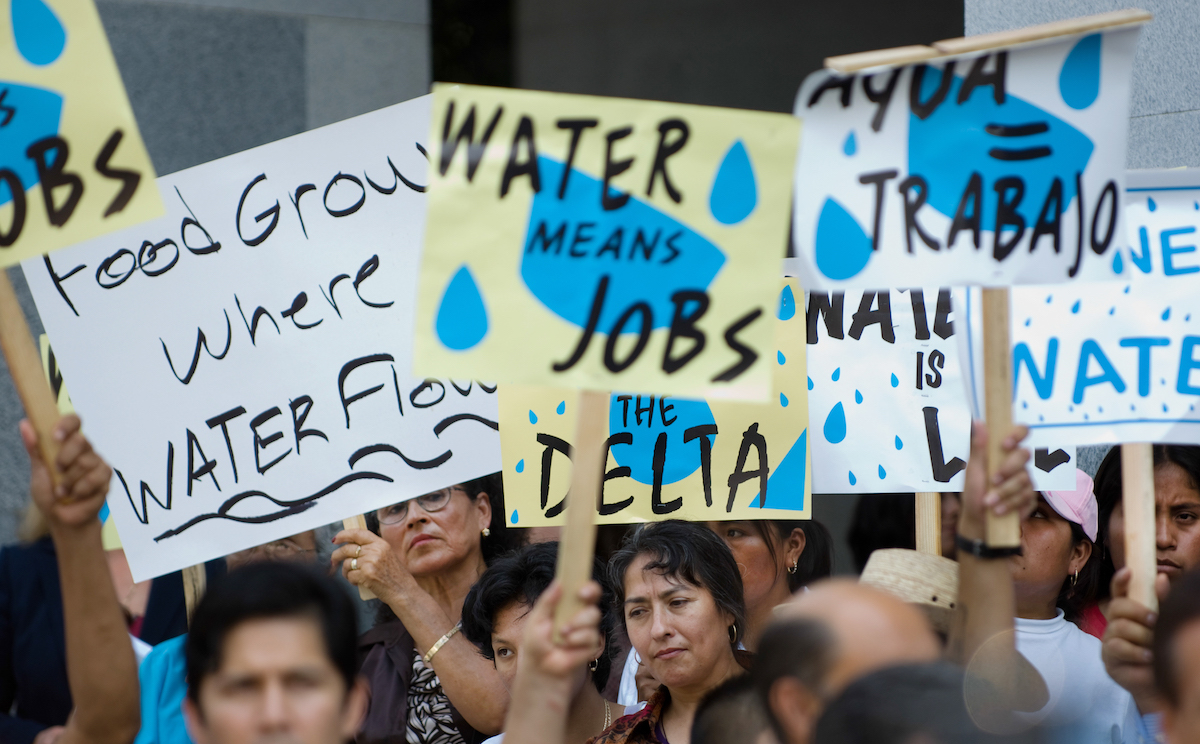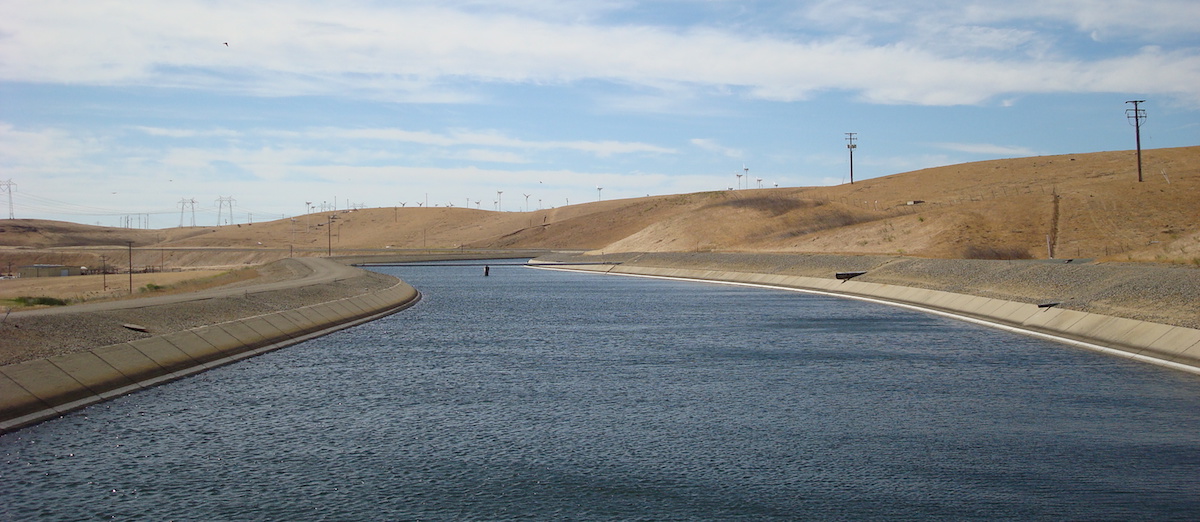July 31, 2018 | Water in the West | Insights
Each year millions of us collect receipts, financial statements and a host of other documents required to file our taxes. Some receipts are paper, some are digital, some files we have, while others are sent to us by employers, and for many, figuring out where things are is an arduous process. Accessing water data in California can be similarly frustrating. It isn’t unusual for water data to be irrationally and incoherently distributed across a wide array of organizations and web portals, in different formats and with varying quality, spatial and temporal coverage, metadata standards, and so forth, making even basic analyses a challenge. In the bigger picture, this situation stymies effective integrated water management.
The past decade has seen the development of a wealth of initiatives designed to address this problem through the creation of online “platforms” – portals or hubs for aggregating and improving public access to water resource data. A few examples include initiatives at the U.S. Department of the Interior, the Bureau of Reclamation, the Water Data Exchange, OpenET, and the states of Colorado and Texas. In 2016, California followed the trend with the passage of Assembly Bill 1755, aka the Open and Transparent Water Data Act.
As California implements this law, it is important for those involved to have a realistic appreciation for the challenges associated with realizing the benefits of open data for the water resource community. Water in the West’s ongoing research into this topic, combined with the findings of other open data scholars, has already yielded lessons to consider as the Act is implemented.
The Facts: Assembly Bill 1755
AB 1755 directs the California Department of Water Resources (DWR) to “create, operate, and maintain a statewide water data platform that, among other things, would integrate existing water and ecological data information from multiple databases and provide data on completed water transfers and exchanges.” DWR is to consult with other government agencies and organizations to develop “protocols for data sharing, documentation, quality control, public access, and promotion of open-source platforms and decision support tools related to water data.”

The bill gives DWR primary responsibility for overseeing design and implementation of the platform. It explicitly provides an option to partner with a new or existing nonprofit organization to “create, operate, or maintain, or any combination thereof, the platform.” However, the overall lack of legislative guidance on governance and implementation in this very short bill leaves a hole big enough to drive a truck through. As one recent report observed, “the law itself does not ensure increased usability of data for decision making.” This large degree of freedom could be good or bad; the devil, as they say, is in the details.
The bill lists several key data types which are currently maintained by eight different organizations, five of which are federal agencies (Table 1). The more vague data types include information about “Central Valley Projects operations” and “fish abundance information.” Interestingly, no provider is identified for water transfer information.

Table 1. Water and ecological data types to be included in the California water data platform per AB 1755.
Fortunately, the state, NGOs, academics, and other experts have been developing guidance to aid implemention of AB 1755. Based on a series of workshops and case study reviews, researchers at UC Berkeley’s Wheeler Water Institute have advocated that design and implementation be guided by end users and uses of the data, such that actual decision-making processes can be improved. DWR has largely adopted this “user-centered” approach.
Additionally, DWR commissioned Redstone Strategy Group to study how to address the challenges of the lack of legislative guidance on governance and conspicuous lack of funding by the Legislature.
Despite these constructive efforts, hurdles remain. Some pertain to the data themselves. The Wheeler Institute’s analysis of 20 use case studies found that the availability and accuracy of some important kinds of data – notably water rights, groundwater use, and economic information such as water pricing and willingness to pay for recreational water use – are currently poor even though they are mentioned or implied in the bill.
Additionally, water expert Jay Lund, Professor at UC Davis, recently observed that the bill doesn’t address a root cause of California’s water data problem: the organizational fragmentation of the various data-collecting agencies. He contends there is reason to be skeptical of attempts to improve water management through increasing access to data without making any changes to deal with this underlying problem.
There are other potentially crucial challenges either underemphasized or unidentified in the discourse and reporting around AB 1755. For more than a year, Water in the West has been evaluating two pilot projects involving the development and implementation of two different water resource decision support tools in California. One of them is a web-based dashboard platform related to Sacramento River water quality and winter-run Chinook salmon abundance. The tool relies on open data from the same state and federal agencies that are obligated to provide data under AB 1755. Observing the committee-based development and implementation process involving representatives of these agencies has prompted us to explore more deeply what is known about the challenges with “opening” data more broadly. There are some important social hurdles that must be fully appreciated and overcome in order to realize the potential benefits of open water data.

Weir gates along the Sacramento River. Source: Florence Low/DWR.
The Socio-politics of Water Data
What’s so complicated about opening data and making all data publicly accessible in the Information Age, especially in the home state of Silicon Valley? Aren’t taxpayers paying for agencies’ data collection activities? In practice, it’s not so simple.
Two of the world’s leading scholars on the challenges of open data, Zuiderwijk and Janssen, observed in a 2014 paper that reports and research assume that the benefits outweigh the negative consequences of opening data but many governments are reluctant to make data publicly accessible, due in part to agencies’ tendency to be risk averse when it comes to releasing information.
Why might agencies be averse to releasing data, even when state and federal laws tell them to do so? Let’s review.
All data are not created equal
All data are not of equal social value. Consider the Obama Administration’s 2009 Open Government Directive which stated: “Within 45 days, each agency shall identify and publish online in an open format at least three high-value data sets…and register those data sets via Data.gov. These must be data sets not previously available online or in a downloadable format.”
A 2011 study found that in practice, most agencies had avoided complying, providing only datasets that were of low value or already available elsewhere online, and found ways to avoid releasing valuable datasets. Further, just 2 of the 169 agencies – the USGS and Census Bureau – provided over 90 percent of the data and applications uploaded to the website. Most of these data were digital maps that were already on the websites of USGS, the Census Bureau, and NOAA. Alon Peled, the study’s author, described the data.gov content overall as mostly “meager and stale,” as evidenced by paltry download rates.
What socio-political factors might have accounted for this behavior? Peled has argued that most federal bureaus did the bare minimum because high-value data sets (digital information especially) – collected and generated at sometimes great cost and labor – are actually a source of power, functioning as a type of bureaucratic currency or capital in the larger realm of government. Agencies bargain and trade with each other for these kinds of data; opening them to the public poses a risk of diminishing agencies’ political power, autonomy, and potential value. As Peled points out, this is not a uniquely American problem; the same behavior was observed in response to a similar initiative in New Zealand. Recognizing this helps explain why U.S. agencies may be happy to release water and water-related data sets of little value while being simultaneously resistant to opening others they would prefer to keep close to the vest for political reasons.
Misinterpretation of open data by end users

Source: John Chacon/DWR.
Another potential hurdle is agencies’ concerns about the misinterpretation and/or misuse of open data. Once open data are allowed to circulate to end users via various tools and apps, agencies effectively lose control over how they are used and the kinds of conclusions the public can draw from them. State and federal water managers may have legitimate concerns about releasing certain information such as the predictive outputs of hydrologic models with respect to water availability and allocation without guidance on the use and interpretation of those outputs. This concern has been explicitly raised by some agency staff in our own research.
Similar issues have been observed in other sectors. A recent review of research on open data noted that one of the chief reasons opening data was not a priority for many public agencies was a strong concern about the perceived loss of control over data. Zuiderwijk and Janssen interviewed 19 open data archivists and high level Dutch civil servants responsible for opening agency data. Several interviewees indicated that certain complex datasets were intentionally withheld from the public because of the high risk of misinterpretation and misuse by users. The authors explain: “Data that are made available as open data are freely available to anyone. This also means that people with limited knowledge about how to interpret open data can use them. This might result in incorrect conclusions about the results of an analysis of the data. Some people may even intend to misuse the data to damage the reputation of the data provider.”
Unwanted transparency

Source: Dale Kolke/DWR.
Greater transparency was one of the key goals of the Open Government Directive and was even included in the name of AB1755, the Open and Transparent Data Act. However, transparency may not always be a mutually desirable outcome for water data providers and can have the effect of drawing unwanted questions and scrutiny from the public.
As Bannister and Connolly write: “Much of the hyperbole about e-transparency is based on assumptions about the nature of transparency and technical rationality that do not always sit well with practical politics and real citizens. (…) For governments, a real risk is that transparency will not only hamper their operations, it may possibly damage their reputation.” Janssen et al. point out that achieving transparency goals through open data can backfire; for example, if it reveals that the data were used to make poor decisions.
In the case of AB 1755 implementation, the public/legislative goal of increased transparency could come into tension with risk averse organizational cultures. Further, certain water and ecological data are tied to highly politically fraught decision-making arenas and guarded internal agency decision-making processes. Between the Colorado, Klamath, Sacramento, and San Joaquin Rivers, along with the Bay-Delta and the Salton Sea, California seems to have more politically contentious, high stakes “wicked” environmental problems than any other state. Daylighting the high-value data at the core of controversial decisions about water allocations and environmental flows in these contexts can mean daylighting non-transparent, internal agency decision-making to some extent, which in turn may draw unwanted public scrutiny, even legal attacks. When this happens, seemingly benign water data can become ammunition for watchdogs on all sides.
While external oversight of water managers and public agencies is generally a good thing, agencies tasked with managing overallocated water systems – sometimes by as much as 1,000 percent – are always going to be fighting a losing battle. At some point, Californians as a whole will need to have a reckoning about what water systems can realistically support. Until then, many water management decisions will remain extremely controversial.
Agency capacity
Making data publicly available takes time and money. Raw data typically undergoes a process of quality assurance and control, generating a need for meticulous correction or modification of datasets before release. We heard many of these concerns in our study and they are supported in the research literature. For agencies with tight budgets, complying with new open data requirements can raise real problems of resource capacity, effectively disincentivizing participation. Simply complying with the law introduces new tasks for every agency involved even if stable funding is secured for the data platform and its oversight. Without considering this issue, implementation of AB 1755 stands to be an unfunded mandate for agencies that are already at capacity.
Avoiding the Socio-political Pitfalls of Open Water Data
Opening data can increase the perceived risks to organizational autonomy, control and privacy of data-collecting organizations in various ways. It is important to recognize that negative consequences associated with opening data in general (and water data specifically) may, in many cases, outweigh the recognized benefits – particularly for risk averse agencies. Many or most datasets identified in AB 1755 may not be subject to such problems. But we urge careful consideration to identify those kinds of information that are likely to create friction points. In the case of high-value, complex, and/or sensitive datasets, extra care in governance design for the California water data platform is necessary to create a sense of comfort for providers and to ensure the provision of high-quality datasets. In our experience, this need not be an insurmountable hurdle, but it can take some time. Based on his experience designing open water data tools, principal and founder of FlowWest, LLC Mark Tompkins put it this way: “Achieving fully open water data can take a long time and requires significant trust building to overcome fears about shared data being used inappropriately.” Appreciating the very real and legitimate disincentives associated with open data faced by agencies and effectively addressing the related concerns and impediments is important so that they are merely speed bumps rather than brick walls in California’s path to open water data.



![[Woods Logo]](/sites/default/files/logos/footer-logo-woods.png)
![[Bill Lane Center Logo]](/sites/default/files/logos/footer-logo-billlane.png)